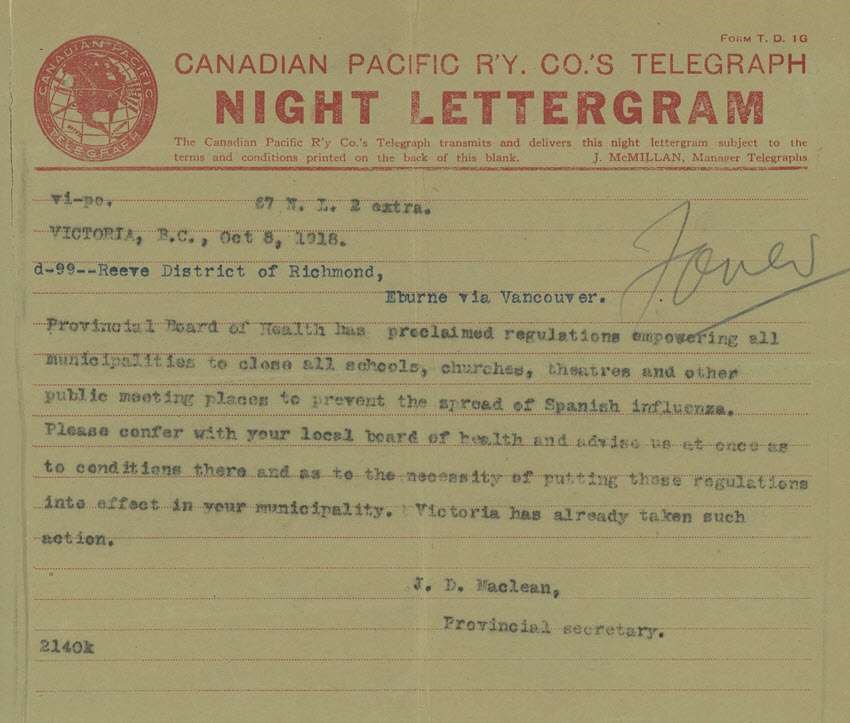In 1918, Victoria gave local municipalities the authority to shut down schools, churches, theatres and public meeting places, and health officials were telling people to stay indoors, not to kiss and not to shake hands.
It was more than 100 years ago, but the parallels between the Spanish flu of 1918/19 and the COVID-19 pandemic are striking.
In the end, Richmond schools and churches were shut down to fight the H1N1 virus that had arrived via returning First World War soldiers.
Last March, as COVID-19 spread throughout the world and the World Health Organization declared it a pandemic, schools shut down and public gatherings were highly restricted. The Gateway Theatre in Richmond hasn’t had a live performance since last February and churches are currently banned from having in-person services.
Reeve receives ‘lettergram’
On Oct. 8, 1918, a “night lettergram” was sent to the Reeve of Richmond informing him the Provincial Board of Health had empowered municipalities to shut down public facilities.
The Spanish flu had arrived in B.C. with soldiers returning by train from eastern Canada.
This flu hit people hard - there were reports of people falling ill and dying within 24 hours, choking on their phlegm, and it seemed to target people aged 20 to 40.
In response, an emergency hospital was set up at the Minoru Park Clubhouse.
Kathleen McNeely, principal of Bridgeport School, and Isabelle Clemens, a teacher, volunteered as nurses.
There were four people admitted to the hospital and at least one death by the end of October.
In November, there were 100 reported cases of Spanish flu in Richmond, but, by the end of the month, it seemed to be subsiding.
The temporary hospital at Minoru was closed on Dec. 7 after admitting nine patients.
But a second wave of the Spanish flu hit at the end of December and 35 more cases were reported by public health officials.
Richmond schools had re-opened on Nov. 29 when it was thought the flu was going away, but, on Jan. 20, 1919, they were once more shut down.
In early February, the medical health officer wrote to council that there 70 cases reported, but there were still large numbers of unreported cases including among the Japanese population in Steveston where two deaths had occurred.
However, on April 30, 1919, Richmond’s medical health officer, W.H. Hall reported the municipality had enjoyed “good health” for two months with no infectious diseases, “which comes as a relief after the epidemic which prevailed during the winter months.”
In the end, about 4,000 people died in B.C. during the 1918-19 pandemic.
It’s estimated 50 to 100 million people died worldwide from the Spanish flu pandemic.



